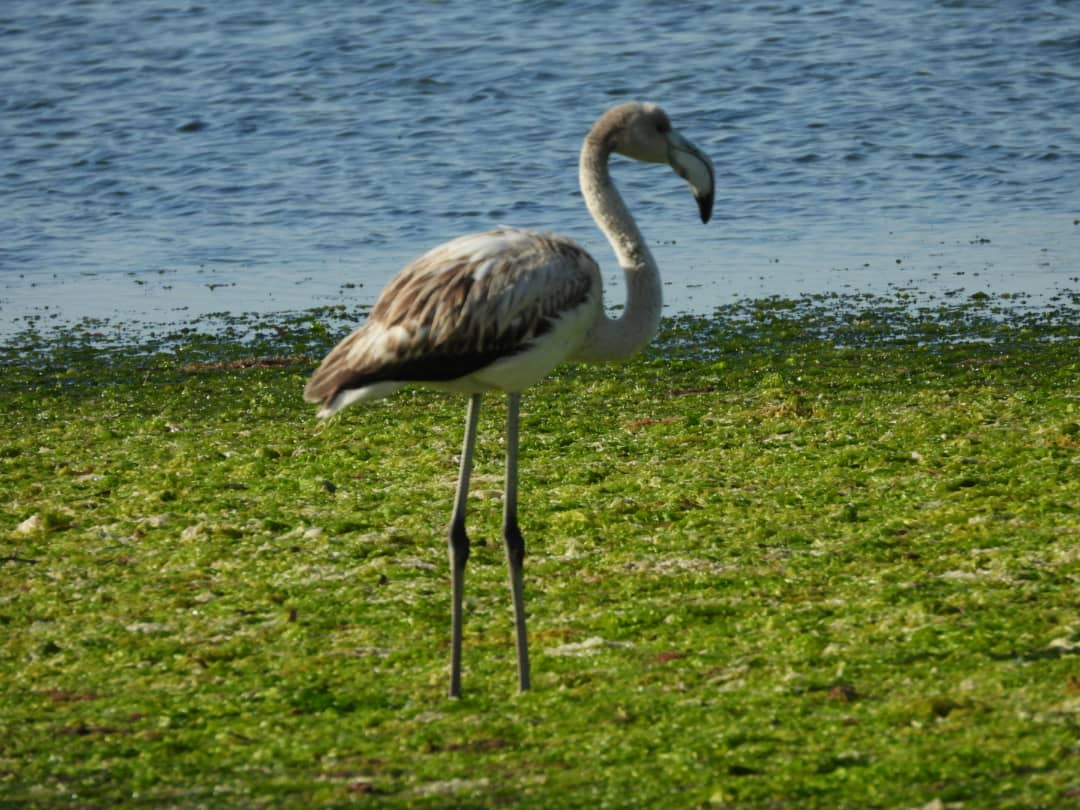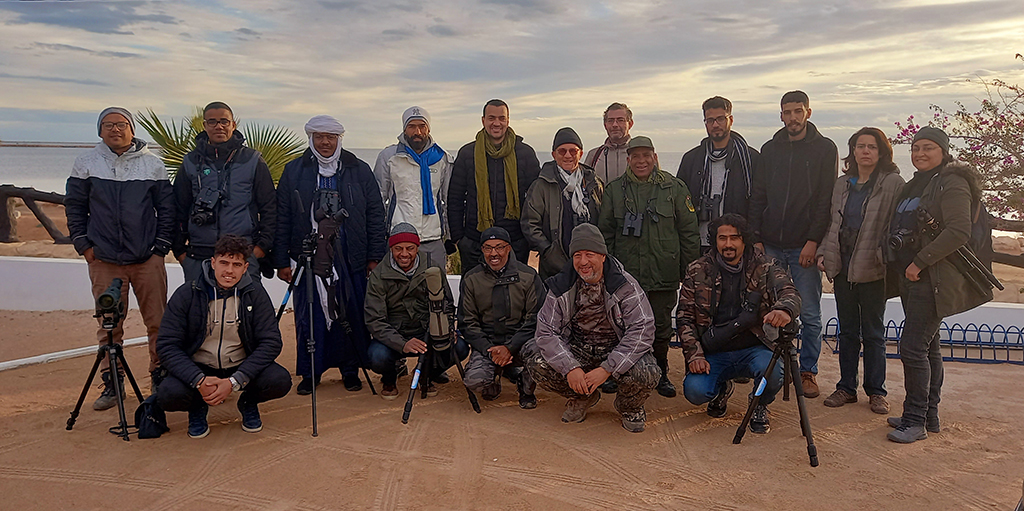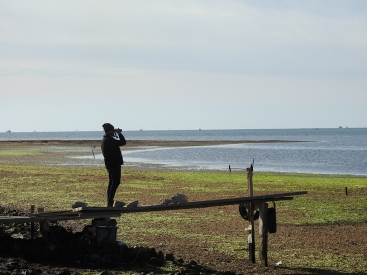Search
01/23: Observing to protect waterbirds
AAO/BirdLife in Tunisia, UNEP/MAP-SPA/RAC and Tour du Valat are organising a regional training course for the International Waterbird Census from 21 to 31 January 2023 in Tunisia. This is an opportunity to learn while contributing to the collection of crucial data for the conservation of birds and wetlands.
Waterbirds are the birds that are ecologically dependent on wetlands for their existence. These include a wide variety of inland habitats, such as marshes, bogs, floodplains, rivers, lakes, and coastal habitats, such as salt marshes, mangroves, intertidal mudflats and seagrass beds, but also coral reefs and other marine areas not exceeding six metres in depth at low tide, as well as artificial wetlands such as dams, reservoirs, rice paddies, sewage treatment ponds and lagoons (see Article 1 of the Ramsar Convention).
There are 112 species of waterbirds in Tunisia, including accidental species. Among these species, several are listed in Annex II of the SPA/BD Protocol of the Barcelona Convention, as endangered or threatened with extinction, such as the Greater Flamingo, Osprey, Audouin's Gull, Sandwich Tern, Kentish Plover, Slender-billed Gull, Mediterranean Gull, Caspian Tern and Gull-billed Tern.

International Waterbird Census 2023 Tunisia - Greater Flamingo (Young). ©Yassine Boulenouar
Sebkhet Sejoumi alone has been hosting over 100,000 waterbirds in January for several years. In general, the largest concentrations of waterbirds and seabirds are found in the intertidal areas and coastal wetlands of the Gulf of Gabès.
In order to strengthen cooperation and the exchange of information and experience, the Association "Les Amis des Oiseaux", BirdLife's Partner in Tunisia, with the support of SPA/RAC and Tour du Valat, started counting birds at the beginning of January, with the participants of the training as reinforcements.
Field visits are organised in all wetlands of importance for waterbirds and continue until the end of the month, to observe, identify, count and record all birds present. At the same time, information on the circumstances and quality of the count as well as on threats and issues related to wetland conservation and management is collected. Special attention is paid to illegal killing of birds and pollution.
The monitoring protocol is the one established by Wetlands International (WI) for the International Waterbird Census (IWC), which has been running for 60 years. Waterbird monitoring programmes established after the launch of the IWC, including the Barcelona Convention's Integrated Monitoring and Assessment Programme for the Mediterranean Sea and Coast (IMAP), align well with this protocol.

International Waterbird Census 2023 Tunisia, with participants of the training organised by AAO/BirdLife in Tunisia, UNEP/MAP-SPA/RAC and Tour du Valat. ©Claudia Feltrup-Azafzaf
According to initial field findings, inland wetlands, both natural and artificial, suffer from a lack of water. They are often completely dry and cannot support waterbirds. On the other hand, the degradation and loss of wetland habitats continues and intensifies: pollution, filling, ploughing, construction, etc. In this critical situation, waterbirds are particularly sensitive to and affected by hunting and poaching. In several wetlands closed to hunting, hunting violations have been observed and reported by AAO/BirdLife in Tunisia.
Continued observation and analysis of the data collected will help to better assess the severity of the situation and to update national, regional and international strategies and action plans, such as the Barcelona Convention's Bird Action Plan. Regular monitoring is used to detect trends in bird populations over time and space, and to identify species that are undergoing negative development and require management and conservation measures to preserve them. These data also help to identify and rank critical wetlands for maintaining waterbird populations.
Article prepared with AAO/BirdLife in Tunisia.
To follow the activities related to the International Waterbird Census on wetlands in Tunisia, please use the hashtag #DIOE2023
Cover photo: International Waterbird Census 2023 Tunisia. ©Claudia Feltrup-Azafzaf




Find Us On...